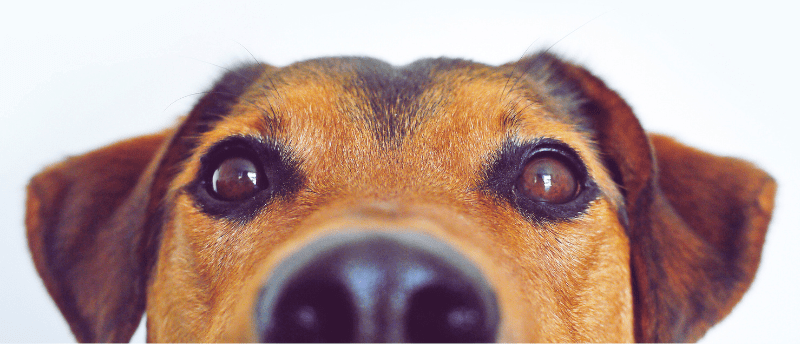Are you making a pessimist out of your pooch?

The smell of your increased stress levels may be bumming out your dog, but it could also be making them smarter…
Researchers from the University of Bristol (UK) have used a behavioral test of optimism versus pessimism in dogs to identify whether their mood is impacted by the odor of human stress and how it can impact their learning. This research could have important implications for dogs in kennels and the training of assistance dogs.
Growing evidence suggests that the smell of human stress can lead others to act more pessimistically, a readily accepted indicator of a negative emotional state in humans. However, our understanding of the impact of stress on man’s best friend has yet to be explored.
Setting out to address this, the team selected a cognitive bias test of optimism and pessimism in animals that involved training them to identify that when a food bowl was placed in one location it was empty (negative) and when in another, it contained a treat (positive). When the bowl was placed in one of three locations between the positive and negative locations, the speed with which the animal approached the bowl provided an indicator of its optimism or pessimism. The bowls were prepared behind a screen, with the same preparation sounds regardless of whether they contained food. In each trial, a bowl was pushed through the screen via one of five doors, each of which was 3.5 meters from the start location.
 Why don’t male mammals breastfeed?
Why don’t male mammals breastfeed?
Researchers have used mathematical modeling to theorize that the reason more male mammals don’t breastfeed is related to the microbiome.
18 dogs of varying breeds were selected for the trial. Three individuals unfamiliar to the dogs donated sweat and breath samples taken during a stressful arithmetic test as well as during a relaxing session of listening to soundscapes. Each dog’s response to the cognitive bias test was monitored as they were exposed sequentially to no odor (control), the stress samples and the unstressed samples. The order of exposure was randomized for each dog.
The researchers found that when exposed to the stressed odors, the dogs were significantly less likely to approach the ambiguous bowl placed nearest the negative location than under control conditions. What’s more, the dogs’ understanding of positive and negative locations improved when exposed to the stress odors but not during the control or relaxed odor conditions, indicating that the stress odors contributed to an improvement in learning ability.
The team hypothesized that the more pessimistic response reflects both a decrease in risk-taking behaviors and the acquisition of a negative emotional state when exposed to human stress. Commenting on the findings, senior author Nicola Rooney remarked: “Dog owners know how attuned their pets are to their emotions, but here we show that even the odour of a stressed, unfamiliar human affects a dog’s emotional state, perception of rewards, and ability to learn. Working dog handlers often describe stress travelling down the lead, but we’ve also shown it can also travel through the air.”





